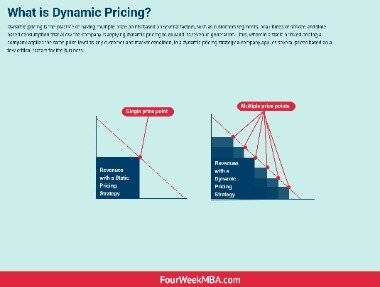
Severance pay entitlement is 15 days’ wages per year of service, as long as the employee has served at least five years. A foreign national will generally apply for an Indian employment visa to the Indian Embassy/High Commission in his country of residence. Following the receipt outsourced accounting and bookkeeping of a visa, all labor laws regulating employment relationships in India also apply to foreign nationals working in India. Broadly, the entitlement to statutory employment rights depends on the category of employee and other factors (such as remuneration, location, and industry).

In the case of professionals, the PT registration must be done within 30 days they start their practice. Every month, the employer shall pay their contributions and the employee’s contribution to the ESIC. The due date for ESI filing contribution is the 15th of the following month. Employees who earn up to Rs 176 on an average daily basis are exempted from the contribution payment. However, the employer will continue to contribute their share for such employees. Currently, the ESI contribution to the employer is 3.25% of the wages, and for employees is 0.75% of the wages payable in each wage period(Monthly).
What is payroll? Definitive guide to payroll in India
With good payroll software, mundane tasks can be automated, and complex ones can be simplified. In order to get these done, there’s tons of background work involved because payroll is more than just about calculating paychecks. It’s an intricate set of process which requires different teams to work in tandem. But all these complexities can be managed effortlessly by the standardization of processes, selecting the right service delivery model, and using modern technology to manage payroll operations.
- It ensures that all tax calculations are accurate and compliant with the latest tax laws.
- It entails collecting and verifying employee data, accurately calculating their gross pay, deducting taxes and other benefits, and finally disbursing net pay to employees.
- The 13th month salary is not common in the US, but it is in many other countries, including India.
- There will be a need for in country human resources personnel who have the background needed to manage an Indian payroll and can fulfil all tax, withholding tax and payroll requirements.
These leaves are sanctioned to the employees without any salary deduction. Depending on the company leave policy, the number of earned leaves may vary. So to make it easy, you must incorporate payroll software, which will consist of features like attendance and leave management, Employee Self Service Portal(ESS), and many more to make it hassle-free. Self-employed or independent contractors in India are people who usually work for employers on a “consultancy” basis.
Stage 3: Post Payroll Activities
It is easy to miss out on a fine detail and be non-compliant, a must-avoid situation. Which is why we bring you this complete guide to running payroll in India. We are also at your service with outsourced payroll solutions for any type of enterprise in India. Trade logo displayed above belongs to ACKO Technology & Services
Pvt Ltd and used by ACKO General insurance Limited under License. For more details on risk factors, terms, conditions and
exclusions, please read the policy wordings carefully before
concluding a sale. With Saral PayPack, we provide you with the software and support that ties all these individual activities together so it works like a well-oiled machine.

Nevertheless, it is crucial to keep up with these changes to avoid penalties and fines. Keeping in touch with a trusted tax professional or Payroll service provider can help businesses stay on top of these changes. Gross income or salary refers to all types of regular income plus allowances plus any single-time payment or benefit. On the other hand, a gross deduction is all types of regular income plus statutory deductions and any single-time deductions. The on-premise software solutions have become obsolete and businesses are going for cloud-based solutions due to their advantages.
Dependence on Multiple Payroll Inputs Sources
There are rules where an employee can take casual leaves, which will vary from three days to five days up to seven days. Some companies do not allow an employee to take all the casual leaves in one go, and few do. Gratuity is received by an employee from his/her employer upon the employee leaves the job. It is deducted every year by the employer, and so it will get deducted from your CTC. Ad-hoc pay items include one-off or occasional pay such as annual bonus, incentives (based on performance), festival advance, etc.
- Considering India’s population of more than 1.2 billion inhabitants and an employment rate of 43.1% employment rate at the level of March 2021, payroll is requested by many companies here.
- Further you can also file TDS returns, generate Form-16, use our Tax Calculator software, claim HRA, check refund status and generate rent receipts for Income Tax Filing.
- Companies typically create their own entities once the costs of an EOR outweigh the costs of creating their own entities.
- Because of the legal and ethical factors involving payroll, it is very crucial for businesses to do payroll and keep a spotless record of its payroll.
- Payroll calculationAfter completing the pre-payroll activities, the actual work towards reaching the employees’ net pay takes place in this stage.
All the employees from the beginning of their employment will be eligible for EPF. Comp offsComp off leaves is offered to an employee who works on a non-working day. National Pension Scheme (NPS)NPS is a scheme initiative of the government of India. It is a pension contribution scheme that allows a person to create a retirement corpus. To cover the employee’s travel expense when he or she is out of work, LTA is offered to the employees.
Deductions and taxes
Working hours in India can vary from state to state and from industry to industry, but an overall national standard is set at a maximum of 48 hours per week and nine hours a day. Any work in excess of this is considered overtime and is paid at double the normal rate. Employers who break rules around working hours are punished severely, up to a maximum of two years in prison and a fine of 100,000 rupee (also known as one lakh, approximately £1040; $1280; €1220). Now that you’ve reached the point of calculating your payroll, it’s time to pay your employees. Employees are eligible for paid maternity leave after working for at least 80 days in the last 12 months.
Under the EPF scheme, employers and employees both contribute to the EPF account every month. However, it is the responsibility of the employer to deposit the entire amount in the EPF account. Usually, the employee’s EPF share is deducted from their monthly salary.For all these EPF transfers, an employee must have a UAN(Universal Account Number), which the EPFO gives.
The company must first ensure that its bank account has sufficient funds to make the salary transfers to its employees. The companies will send the salary bank advice statement to the concerned bank directing it to disburse salaries from the salary bank account. However, the company can automate this salary payment process to employees through software with an in-built direct deposit feature.

